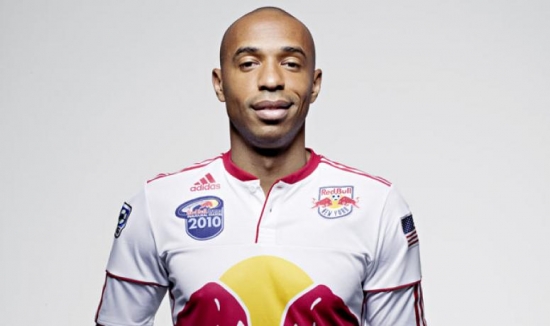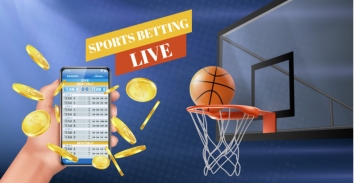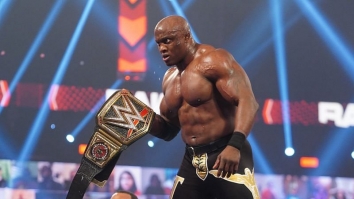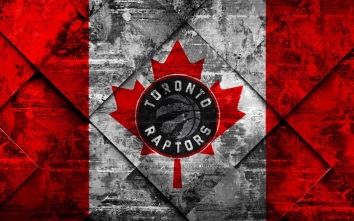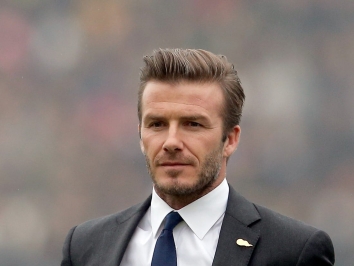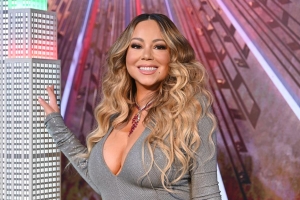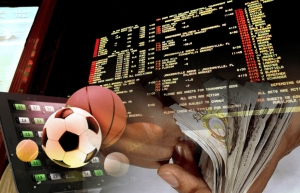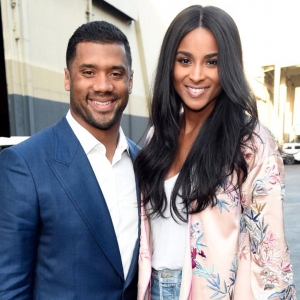Thierry Henry aiming to be the first French inductee into the National Soccer Hall of Fame
It’s perhaps easy to dismiss Thierry Henry’s time in the United States as nothing but a swansong following a glittering career at the summit of European football, but that would be a mistake. Henry ended up spending four and a half years with the New York Red Bulls and over that time he helped the side win their first trophy in 17 years.
That landmark day came back in October 2013 when the New York Red Bulls won the Supporters' Shield after a 5-2 win against Chicago Fire. Henry’s contribution was vast as the Frenchman scored one and assisted twice during the stunning romp to the regular-season title. In essence, if that fixture is a condensed version of Henry’s time in the States, he was by no means there to make up the numbers after he signed for New York in May 2010.
Over the course of those four and a half seasons in the Big Apple, Henry racked up 135 appearances whilst scoring 52 goals and assisting a further 42 times. Tellingly, the only clubs he spent more time at during his career were Arsenal and Monaco. In fact, Henry’s time in the US was so successful that his name has been included in the finalists for the National Soccer Hall of Fame's 2021 Class. The 43-year-old’s efforts are included under the criteria of ‘illustrious playing careers that involved significant MLS contributions.’
Whether Henry will ultimately be included remains to be seen but the very fact that the Hall of Fame’s selection committee is considering his admission speaks volumes given how exclusive this club is.
The World Cup-winning star didn’t let the grass grow under his feet when he arrived in America and single-handedly took the league into more homes around the world than ever before. One could even argue that Henry’s time in the MLS rivaled David Beckham’s in terms of putting the league on the map.
As it turns out, Beckham has also been drawn up alongside Henry in the 2021 list of potential inductees so perhaps we may find an answer to that question sooner rather than later.
Looking back, however, you have to admire how Henry, in particular, took to American culture so seamlessly which undoubtedly aided his on-field performances. There are a few memories that stick out but above all, who can forget the warm welcome the Frenchman received in 2017 upon his return to New York?
Henry was invited to throw the ceremonial first pitch at Citi Field in front of adoring New York Mets fans. It must be said, decibel levels are rarely that loud at Citi Field after a barren run that last saw the New York team win the World Series in 1986. Unfortunately, their MLB odds on bet365 suggest that trophy hiatus won’t end anytime soon with the Mets at 10/1 for a shot at World Series glory this season.
But perhaps this is the year for Henry and the Mets in their quest to pull off the impossible.
Henry has won the biggest soccer trophies everywhere he’s gone, from the World Cup to the English Premier League, the formidable French player has claimed them all but perhaps his crowning glory is still to come. An eternal place in the National Soccer Hall of Fame would cement his legacy as the MLS’s most prolific foreign import.
Does Popularity Affect Dating Life?
Being a member of any hall of fame brings popularity and interest from the public. While trying to find dating sites here on beyondthecharter.com, people often wonder if there is a chance to meet a famous artist or athlete on such online platforms, and how do they actually date someone? This article will help you clear that out.
Are Publicity and Personal Happiness Compatible?
There are numerous cases of famous people dealing with loneliness and those are just those who went public. Nobody knows how many famous people are fighting depression or some milder versions of it.Being a public figure is surely stressful, but that doesn’t mean celebrities can’t be happy.
A lot of famous people are happy even though they have to deal with publicity every day. The key must be in keeping private things for themselves. Posing for photos with their dates is one thing. Sharing every detail of your (love) life is another. The right mindset is crucial as well. They have to be aware of their publicity and the things that come with it.If being in the center of attention makes a celebrity unhappy, but there is no exit except to endure - they have to change their mindset. Accepting the situation they are in is the first step toward happiness while being famous.
What Partners do Famous People Choose?
Famous people date other celebrities most of the time, but some of them date ordinary people. It’s common for famous people to date other public figures because of a couple of reasons:
- they hang out mostly with famous people, so they don’t get a chance to meet us “regular mortals”- when you spend most of your time surrounded by celebrities, you eventually fall in love. In most cases, famous people don’t date each other on purpose; it just happens. They click with each other the same way “regular” people do.
- other famous people understand their situation better than normal people- you may think that being famous is bread and butter. Still, publicity is often followed by many negative emotions, a lack of free time, and a lot of stress. Regular people may have trouble understanding what bothers their famous partners. That’s why most celebrities date somebody who understands what being famous means.
- sometimes it has nothing to do with love- some relationships between famous people are just a farce for the public. Sometimes celebrities choose their partners based on the benefits they’ll bring to their careers.
Can Celebrities Date Ordinary People?
There is no rule forbids them from dating ordinary people, of course. It’s not that unusual to see a couple where only one person is famous. Celebrities are humans like you and I, they have the same feelings, and they fall for the same things.
You can start dating a celebrity if you get a chance to meet one. It wouldn’t be the first time somebody unknown dates a famous person. But if that’s your mission, you have to be careful and play your cards right. Show your interest, but don’t act like a wild-12-year-old in front of Justin Bieber.Celebrities are sick of that; everybody always does everything they want. Your chances will rise if you stay natural.
Let's take a look at famous people who choose non-famous life partners.
Christina Aguilera- The popstar of the ‘00s prefers to date ordinary men because she wants to be the only star in the couple. With one of the strongest voices, she now has one of the strongest relationships with over 10 years of love history. When she met her current partner,Matthew Rutler, he was a production assistant. However, this fact didn’t prevent them from falling in love and having a common child and a common future.
Billie Joe Armstrong- Green Dayfrontman who gained popularity in the 1990s, after disappointment in a long-distance relationship, married his fan, Adrienne Nesser.This way of confronting the chaos in his life turned out to be so working for him that the couple has been together for many years since their wedding in 1994.
Cristiano Ronaldo- The famous football superstar once had an affair with the famous supermodel,Irina Shayk. However, he calls his current life partner, Georgina Rodriguez, his "true love". Their fateful acquaintance took place in the Gucci shop, where Georgina worked as a sales assistant. Both singles, both in love at first sight. They are happy together for almost five years, and during this time the former shop assistant has become a popular influencer.
Britney Spears- Another popstar of the ‘00s, whose personal life has had a lot of ups and downs. When she was single, she had an account on a dating app, so it never mattered to her if her partner was popular. Now she is dating a personal trainer, Sam Asghari, and has all the love and support she needs.
Take Love Search to the Online Level
You may think that famous people don’t use online dating sites, but that’s not true. They love the fact they can meet ordinary people online without being chased by photographers or fans. So if you’re looking to start a relationship with somebody famous, online dating is your best chance. You won’t be able to stand out and get their attention at some event for celebrities, but your chances online aren’t bad. Here are a few of those who have tried to search for love on dating sites.
Adele,who said she received no response because she couldn't add her real photo to the profile due to her popularity.
Sharon Stone, who said that her dating account was blocked because users couldn’t believe she had joined the app and, therefore, complained that it was fake.
Adam Duritz,who told his fans that he tried a dating app despite the age bias of users of such online platforms.
Rob Gronkowski,who wrote a story about athletes' attitudes towards digital-dating devices.
D'Angelo Russell, who shared his thoughts on how affordable and easy dating is in the age of social media.
Popularity does affect dating life, but that’s something famous people have to deal with. That’s why more and more people in search of celebrities are testing online dating; it’s private and convenient.
Strategies and Tips: A Guide To Basketball Betting
One of the most popular sports that bettors get excited about is betting on basketball. It's been many years since basketball betting has made a huge impact in terms of money-making. Speaking of earning money into betting, more strategies and tips can help you succeed.
Applying strategies to betting is not simple, especially if you have no idea where to begin. You can grab books related to the subject to give you some advice to develop your strategy. You can also research on the internet about specific information related to basketball betting techniques. For more information, you can find FanDuel here.
Having the strategies for basketball betting is not enough. You have to use them as a guide to improve your betting techniques. For you to apply it to the game, you must know how to utilize it. Do not just stick to one tip when choosing your bets. Better conduct more study on basketball betting strategies to enhance your betting skills.
It is essential to have strategies when it comes to betting. It would help you improve your expertise in betting if you learn the game’s process. A guide in basketball betting helps many bettors increase their chances of winning. The experts believe that when you exert more effort into learning more about betting strategies, there will be a bigger chance that you will win.
Betting Strategies For Success
Basketball betting is well known, and sometimes it is confusing because some bettors don’t have any idea where and how to start betting. It will be challenging for a bettor to find an effective basketball strategy since there are no universal tactics. You also have to adopt other strategies as this will add to the possibility of winning.
Expert bettorshave their ways on how to follow an order for them to be profitable. They know how to navigate the basketball betting game by observing the movements of the team or player. There is no assurance that you will win in basketball betting. However, you may be able to lower the risk of failure with the right and effective strategy.
Luck plays a big role in basketball betting. Predicting which team will win is difficult and risky. The result may be good or bad, but many tactics are involved when you engage in betting. The timing, spotting the team’s strength and weakness and understanding each team’s line movements, and more.
You should always be ready for the betting outcomes. Sometimes you win, and sometimes you lose. There is no guarantee that you’ll win with the team or player you choose. At the start, you will be afraid of taking risks but you have to trust that you chose right.
Mighty Betting Tips
If you are new to basketball betting, it would be hard for you to reach the goal of winning the game. There is a lot of information about how to be successful in basketball betting. You can get it from experts’ tips, books, or on the internet. It takes time to learn the sportsbook.
Bettors have a limited amount of money. If you are consistently losing the game, try to think of the correct strategies to win the betting game.
At the beginning of the game, you will decide how much money you have for a bankroll. Separate this amount and do not touch anything except the money for betting. You have to divide the reserved amount by 100 and place a bet not bigger than this amount to observe the results and see the improvements.
There are two bets, small and big bets. Small bets mean that you will get a higher total odds and reward. Big bets mean that you will get lower odds and an award but higher chances of winning. The risk between the two bets is equal.
Keep track of all your withdrawals and deposits to help you monitor your money. It is better to stop playing the betting game if you keep losing because it will be hard to recover from overwhelming debt. To avoid these circumstances, you must understand the game process to help you win basketball betting and choose the right decision in betting to be successful in the game you play.
In Conclusion
The tips and strategies listed above are far from comprehensive but they will be a great help to someone who has only begun their journey as a bettor. Even if it takes time to learn it, your strong desire will take you a long way to becoming an expert bettor and will pay off when you see the progress on the games you are playing. You have to be consistent when applying the right strategies that you have learned to be more successful when it comes to basketball betting.
WWE STORYLINES JUST BEFORE FASTLANE AND WRESTLEMANIA
Wrestlemania is the biggest, most anticipated event on the pro wrestling calendar, period. The WWE may not be the monopoly it once was, with the AEW contending strongly, but Wrestlemania still stands atop the hill and always delivers, from the events leading up to it to the big one. The WWE always does a great job from promos to the actual event, and can make you feel like you just got a Monkey Knife Fight promo code which will be a total gem to have in case there is a big bet to go for. After a year hampered by the coronavirus and having to stage events at their training facility, this year's event may have fans in the stands as the government works through the vaccine. Before Wrestlemania, though, there is the SmackDown and Raw pay-per-view of Fastlane. The event and results could have a telling impact on Wrestlemania matchups, including finding a challenger for WWE Champion Bobby Lashley.
Fastlane is going to be packed with key matchups, and championship fights at almost every turn.
Bianca Bel Air and Sasha Banks
Banks dropped one of the hottest lines of the year when she said she was the Michael Jordan of women's wrestling, and if Bianca Bel Air worked hard enough, she could become the LeBron James of it. It was both taunt and respect from Banks who is set to face Belaire at Wrestlemania. Before their big fight, however, both women have the opportunity to be crowned tag team champions, when they face the team of Nia Jax and Shayna Baszler. Both women are still to hit a sweet spot in their chemistry and Fastlane is too big a stage or opportunity to mess up once again.
Apollo Crews and Big E
Apollo Crews finally showed his true colours, turning into a heel in the process and putting the hurt on Big E. While sidelined with injury, the former New Day man has probably had nothing but revenge on his mind, and at Fastlane, he will have his shot at Crews. Both men will battle for pride, bad blood, and the intercontinental championship. On SmackDown, Big E laid down an open challenge to Crews for the intercontinental championship, but got Sami Zayn instead, who provided solid distraction until E clamped him with a Big Ending. Only then did Crews show up to deliver a steel step beatdown on the champ, setting up a tasty Fastlane encounter.
Daniel Bryan and Roman Reigns
Daniel Bryan beat Jey Uso on Smackdown to book his place on Fastlane as the challenger to Roman Reigns for the WWE Universal Championship. Bryan is hell-bent on winning or at the very least make an appearance at Wrestlemania, but all of that will depend on how his shot at Fastlane goes. This week on SmackDown, the Rated-R superstar Edge, called out Bryan for his cunning tactics to worm his way into a title shot, as both men could potentially be a matchup in the near future.
The card for Fastlane continues to grow, and so also are the matchups. It should be a ton of fun to watch.
Canadian success stories in major league North American sports
Fiercely passionate about sports, nothing gets Canadian fans more excited than beating those noisy neighbors from south of the border. Whenever that happens, it’s always a cause for wild celebrations, especially when major league championships are at stake. Let’s take a look at which teams have enjoyed the most success.
NFL
Compared to all the other major professional sports competitions, the NFL is the only one that has never featured a Canadian franchise. However, that could change in the coming years if Toronto billionaire entrepreneur Pat Mazza gets his way.
Instead, the Canadian Football League (CFL) is the professional competition north of the border, played under a slightly different set of rules to those of the NFL. Winnipeg Blue Bombers are the most successful CFL team of all time, winning the Grey Cup 25 times.
Nevertheless, numerous Canadian gridiron players have enjoyed solid NFL careers. The most successful was quarterback Mark Rypien of the Washington Redskins, who won the Super Bowl twice and the Super Bowl XXVI MVP in 1992.
NBA
Professional basketball has largely struggled to make inroads in Canada. While there is the Canadian Elite Basketball League and the National Basketball League of Canada, the NBA has never featured more than one team from north of the border.
In 1995 the Vancouver Grizzlies franchise moved to Memphis in the United States, although they were immediately replaced by the Toronto Raptors, who debuted in the NBA the same year.
Like many new franchise teams, life was difficult at first. Nevertheless, the Toronto Raptors have continued building and improving. After becoming a regular in recent years, the whole of Canada celebrated when the Raptors triumphed in the 2018-19 NBA Finals.
MLB
While there are many professional minor league teams located in Canada, of the current 30 Major League Baseball franchise teams, just one hails from north of the border. This is the Toronto Blue Jays, who were part of the 1977 MLB expansion.
The Blue Jays have won the World Series twice in 1992 and 1993, boasting the honor of being the only Canadian team ever to achieve that feat. Sadly, their only success in recent years was to win the MLB East Division title in 2015.
As this Interac Casinos article highlights, it’s fair to say that online gambling is arguably more popular than baseball in Canada, where online operators are more established compared to those in the United States.
NHL
Considering the fact that professional ice hockey was a Canadian creation, over the last few decades, there has been a surprising lack of NHL and Stanley Cup champions from the Big White North.
It wasn’t until 1927 when teams from the United States began to join the NHL, with the first major expansion. As more American teams joined and started becoming successful, the balance of power largely remained with the Canadian teams, up until around the 1980s.
The most successful NHL franchise of all time is the Montreal Canadiens, who have lifted the Stanley Cup on 24 occasions. However, the last of those was back in 1993, almost three decades ago, which underlines how much American teams now dominate the NHL.
MLS
Soccer is by far the most popular sport in the world, although it took a long time to be embraced in North America as a major sport. The MLS was launched after the United States hosted the 1994 World Cup, enjoying phenomenal growth since then.
While they didn’t participate when the MLS debuted in 1996, three Canadian teams are now prominent members of the competition. The first was Toronto FC in 2005, followed by CF Montreal in 2010, then Vancouver Whitecaps in 2011.
The strongest team from Canada is undoubtedly Toronto FC, who have reached the MLS Cup final three times in the last five seasons, winning the overall championship decider once in 2019. They are probably the best hope for sustained Canadian success in major league sports.
David Beckham gets Another shot at Soccer Hall of Fame
When David Beckham was first nominated for a place in the National Soccer Hall of Fame, he was largely known as an influential player for LA Galaxy. The former England international had already agreed to produce the newest franchise in MLS but the wider public was largely unaware of the formation of Inter Miami.
Back in 2019, Beckham’s legacy for United States’ soccer was yet to be fully appreciated but, fast forward two years and he’s starting to become more widely acknowledged.
Galaxy Alumni
It’s not a great surprise that David Beckham was overlooked when the 2019 nominations were assessed. He had been a pivotal figure for LA Galaxy and made over 100 appearances for the franchise between 2007 and 2012. Galaxy won the MLS Cup twice in that period and Beckham had a significant role to play each time.
As impressive as his contributions may have been, David Beckham’s efforts were hardly worthy of a place in the Hall of Fame at that time. However, two years later, his work to bring Inter Miami into the top division might just see his place among the elite confirmed at the awards ceremony in March.
First Year Report
Inter Miami became the newest members of the MLS family when they were included at the start of the 2020 season. Beckham appointed Diego Alonso as coach and the franchise subsequently finished in tenth place in the Eastern Conference. It was a respectable return for a brand new side and it was enough to see Inter progress beyond the regular season.
The journey didn’t last much longer, however, with the club eliminated at the very next stage - the play in round. David Beckham would have been happy enough with a solid start but it’s clear that he’s aiming much higher in 2021.
A New Era
Diego Alonso’s performance in the dugout wasn’t enough to earn him another shot at the MLS Cup. Inter Miami removed the experienced coach in the close season and replaced him with Beckham’s former Manchester United teammate, Phil Neville. Formerly in charge of England ladies, Neville will need to improve on Inter’s performance in their inaugural season.
The sportsbooks aren’t offering too much hope in this respect: The best betting sites listed on sbo.net indicate Los Angeles FC listed as favorites to win the MLS Cup in 2021. Close behind are last season’s finalists Columbus Crew and Seattle Sounders while Canada’s Toronto FC are also rated highly. Meanwhile, Inter Miami are way down the list as 12th favorites for success.
The new MLS campaign gets underway in April and those market odds will start to move as the games commence. To keep up with the changing patterns, stay tuned to sbo.net who will update the prices while offering insight and news updates along the way. Sportsbook offers and promotions will also be in place for those who want to get involved.
Peer Recognition
David Beckham’s potential induction into the National Soccer Hall of Fame isn’t dependent on whether his Inter Miami side win the MLS Cup but success would certainly raise his profile even higher. By that point, he may already be among the elite within the game and the recognition of his peers would be fully deserved.
Beckham’s legacy is largely felt in his native England where he helped to make Manchester United win multiple Premier League titles. Major League Soccer with LA Galaxy was largely seen as a stop along the way before the midfielder finally ended his playing career in France with Paris Saint-Germain. As a soccer club owner, his work will be most keenly felt in the United States as Inter Miami look to make their mark on the national game.
The Best Love Songs of The 51st Annual Songwriters Hall of Fame Inductees
When you consider the choice of the best love songs from various artists, it is natural to come up with the ones written by outstanding songwriters nominated in the Songwriters Hall of Fame. Since it is known that the 51st Songwriters Hall of Fame Gala postponed till June 2022, we have time to identify the best date night songs from artists who have made great contributions and honored for induction in the Songwriters Hall of Fame.
Music and Love – the Best Combination
Everyone knows that music has the power to influence love in rather important ways. It can help set the mood, say what you cannot on your own, and do so much more. Music really is the best combination for helping people get closer. And it's really a talent to write not just a catchy song but to develop a thoughtful, meaningful piece of music. For that reason, along with lustylocals users who are focused on romance, we're going to pick out recognized incredible love songs by songwriters announced last year as one of the inductees into the Songwriters Hall of Fame.
Mariah Carey
Always Be My Baby is one of Mariah's biggest hits that is still played on the radio today. The song is not merely a catchy tune, but it also demonstrates her vocal strength and ability to construct a beautiful, meaningful song with lyrics such as "You'll always be a part of me, I'm part of you indefinitely."
Annie Lennox and Dave Stewart (Eurythmics)
While Sweet Dreams (Are Made of This)is not necessarily a song directly about love, it has been interpreted that way throughout the years. It talks about how some relationships are helpful, and others use people. The song has a funky synth beat, too, and it deserves to be immortalized.
Pharrell Williams and Chad Hugo (The Neptunes)
Together, the pair wrote the song U Don't Have to Call, which was then performed by Usher. The lyrics include: "You don't have to call/It's okay, girl/'Cause I'ma be alright tonight," which shows a man moving on from a relationship even though it appears tough.
The Isley Brothers
One of the most popularsongs of the early 1970s, The Isley Brothers' That Ladyis about a man obsessed with a woman, but she rebuffs his advances, and he decides to "keep on keepin' on" and move onto the next part of his life.
Steve Miller
I Love You is incredibly simple and whimsical song, demonstrating the light, airy feelings that love can inspire so perfectly that it stands out from the rest of the album.
Rick Nowels
Nowels co-wrote the song White Flagwith Dido and Rollo Armstrong. The song is about the end of a relationship and how one person can't move on while the other seems to have come to grips with it. The song perfectly encapsulates the desperation that one feels when something important has ended, but you can't give up with the line, "But I will go down with this ship/And I won't put my hands up and surrender."
William "Mickey" Stevenson
He wrote I'll Always Love Youfor The Spinners, and the song was very loving with lines, "Sometimes a man/Has too much pride to see/But losing your love, my darling/Has opened my eyes for me."
It is clear that some bands and people belong in the Songwriters Hall of Fame, even if they didn't sing the song themselves. In this case, the love songs outlined here are transformative and indicate special individuals that made a real difference with their works.
The Beginner’s Guide to the World of Sports Gambling
Sports betting is a great way for sports fans to enhance their viewing experience and possibly make a quick buck at the same time too. However, there are of course dangers in risking your money for your favorite players and favorite teams, and with all the types of bets you could make, it can get easy to get confused and to just make clueless bets.
When betting on sports, it’s important to be familiar with how sports gambling works, in order to not just have a fun experience, but also to minimize the risk of you losing all your money.
Why should you bet on sports?
Why do people bet on sports in the first place? Most people like to bet on sports because it’s an extremely quick way to make money, and there’s virtually no effort involved. It’s also a great way for fans to become more invested in the games that they’re watching since you’d probably be watching an entire game if you had money on the line.
Of course, gambling on sports should be viewed as an activity just for leisure, although there are some people who can legitimately make a living out of gambling on sports. For beginners, though, it’s best to view sports gambling as a hobby for sports fans with money to spare.
Where can sports bets be placed?
Sports bets used to be generally placed in local sportsbooks or casinos, but today, through the internet, sports bettors can place their bets online in a variety of online sportsbooks. Gamblers can easily check online for legitimate sportsbooks that offer all sorts of wagers for different sports.
These online sportsbooks offer a selection of payment methods that are secure and that may allow you to withdraw your winnings almost instantly. Plus, most sportsbooks offer welcome bonuses for new members which can allow users to bet without having to risk a single cent.
Types of bets
Betting on sports is generally viewed as simply placing a wager on who you think will win a game. However, there are much more bets and much more opportunities for winning than that. There’s only a limited number of games you can place a bet on per day, but with these various types of bets, the options are almost limitless.
Moneyline Bets
Moneyline bets are the simplest bet to make on sports. In the moneyline, a matchup is denoted through a + and – sign, and each team has corresponding odds. For example, in a game between the Kansas City Chiefs and the Denver Broncos, the odds may be presented as: Kansas City Chiefs +150 vs. Denver Broncos -300. Generally, when odds are presented, the team with the lower or negative odds is deemed the favorite while the team with the higher or positive odds is deemed the underdog.
When betting on the moneyline, the amount you win is dependent on the odds of the team you’re playing against. To put it simply, in the odds presented above, the you’d win the equivalent of the odds of the underdog for a $100 bet. So, if you bet $100 on the Broncos and they win, you’d win $300. On the other hand, a bet on the favorite may be understood as the amount that you’d need to bet to win $100. In the case of the Chiefs, in order to win $100, you’d have to bet $150.
Spread Bets
Betting on the spread is betting on which team you expect to win, but with a catch. The spread is the difference between the final scores of the two teams. If you’re betting on the favorite, your team has to win and likewise cover the spread, while if you bet on the underdog, your wager will pay off if the underdog wins outright or loses but the winning team fails to cover the spread.
To give an example, if the spread is 4.5, and the favorite won, a bet on the favorite would only win if they finish the game with a lead greater than 4.5. A bet on the underdog, on the other hand, would win if the underdog won or if they lost the game but the deficit was less than 4.5.
Totals
Sports bettors who don’t like betting on which team will win can bet on totals instead. This is basically betting on whether or not the final total score of the game would go under or over the number set by the sportsbook. For example, when the point total is 220.5, you can bet on either the over or the under. If you bet on the over, the final scores of both teams, when added, should be greater than 220.5, while if you bet on the under, the sum must be less than 220.5.
Parlays
A parlay is a great way to make big money from a small bet. Basically, a parlay is a single bet on multiple games, wherein all your bets would have to be correct in order for you to win. If one of your picks loses the game, you lose the entire bet. Parlays are riskier than the other bets that you can make, but they pay better.
Proposition Bets
Proposition bets, also known as prop bets, are bets on certain outcomes that may or may not occur within a game. These bets can go from the most random, such as which team would score 10 points first, or to more calculated ones, such as whether or not a player can grab 12 rebounds in the game. These types of bets may also be made while the game is ongoing, but it’s advised to bet small when making prop bets, since they’re less predictable than other bets.
Futures Bets
Making a futures bet is making a bet on an event that will occur at some point in the future, such as whether or not a team will reach the playoff, or who will win the MVP award or the championship. Like the moneyline, each team or player has corresponding odds, with the least likely outcomes having low odds and high pay, and the most likely outcomes having high odds and low pay.
Things to remember when betting on sports
Self-Control
Maintaining self-control when betting on sports is paramount. It’s easy to get carried away and to just risk money on virtually every bet you could possibly make hoping that these bets will pay off. However, to succeed in gambling, or at least not have a bad time, it’s important to be disciplined and to only make sensible bets that are likely to happen. Even though it’s gambling, it’s still advised to gamble wisely in order to maximize your wins and minimize your losses.
Anger Management
There are many videos to be found online of sports fans losing their minds because of a lost bet. You don’t want to be that guy. Sports can get intense, especially when there’s money on the line, but always remember that you’re gambling, and losing some money from time to time is an inherent part of sports betting. When emotions run high, learn to accept the loss and don’t ever make bets when you’re angry. Being at the height of your emotions can lead you into making unwise bets and may even cause you some financial trouble.
Bankroll Management
Sports gambling is a hobby reserved for those who have the means. When you decide to become a sports bettor, it’s essential to set aside a part of your budget that you can afford to lose. You should always be aware of the fact that you can lose every bet that you make.
This can however be avoided by managing your bankroll well. Managing your bankroll means spreading out your bets into small, separate bets instead of betting everything on one wager. You should also make sure that the amount you’re betting will not force you to dig into your pockets outside of the budget that you have set aside for gambling. Once you go bust, you should only come back once you have the financial capacity to do so.
A Guide to Online Gambling
Millions of people around the world like to gamble online. Whether you want to place bets on sport, play online casino games, or play bingo, online gambling can be a great way to spend time and winning real money is thrilling. If you do not know where to begin with online gambling, here is a quick guide to help you get started.
Step One: Choose a Game
It can be tempting to start online gambling by trying every game out there, but this is a great way to lose money fast! A better idea is to choose one or two games that you think you will enjoy, then learn the basics by playing free versions. Once you have got the idea of how to play, you can start playing with real money.
If you are planning to bet on sporting outcomes, make sure you are betting on something you know and understand. If you have never watched golf before, do not place a large bet on a golf competition! Play to your strengths.
This should minimize the risk of losing money and can help you figure out where to place your hard-earned cash.
Step Two: Choose a Platform
Not all online gambling sites are the same. Some give great sign-up incentives like bonus plays or bets, while others offer good odds or more frequent rewards. Depending on what you want to play—online casino games, sports bets, or bingo—you might have different requirements. Take a look at www.bingositesreviewer.com for a list of the best bingo sites, online casinos, and online slots. Find the platform that works for you and get started!
Step Three: Verify Your ID
An important step before you will be allowed to start gambling online is verifying your identity. When you sign up to a website, you will have to provide your address and an image or PDF of a form of ID. This is so the platform can check you are old enough to gamble, but there are also some anti-money-laundering verifications that take place. It is all pretty straightforward, but on some platforms it can take a few days for your identity to be confirmed, so be prepared to wait.
Step Four: Set a Spending Limit
Once your identity has been confirmed and you are ready to play, it is a good idea to set yourself some spending limits. When you are gambling online, it is easy to get carried away, and if you make a loss, it is tempting to deposit more to try and win it back. Try not to fall into this habit!
Most online gambling sites have the option to set up a maximum daily deposit. This is a great idea as it will prevent you from topping up your account when you have run out of money. This way you will not spend more than you can afford.
Step Five: Have Fun!
Once you have set up your spending limits and deposited some money, it is time to get playing! Whatever type of online gambling you have chosen, it is important to have fun. There are benefits to gambling online and it is a great way to pass the time, so sit back and start enjoying yourself.
If you follow these easy steps, you can be enjoying yourself on online gambling sites in no time. What are you waiting for?
Famous Sport Stars Who Date Celebrities
Sports stars and celebrities manage to meet quite often when they do commercials or attend award ceremonies together. As a result, there are many relationships between celebs and sports stars. We’re going to take a look at some of the most successful couples and show you why they got together and how long their relationships have lasted.
Does A Full-Time Professional Career Compatible with Personal Life?
A question that is always asked is whether or not famous people can last since they tend to live such incredibly complex lives. After all, a movie star can be on a foreign film set for years, and a sports star could spend upwards of half the year constantly working with their team. People can point to a hundred examples of celebrity couples that have split, but it is not often because of their work. Most times, it is due to their personalities instead. Think of your friends and family—they have had plenty of breakups without the complexities of their job being an issue. In other words, the successful marriages of sports stars and celebs show that professional careers are not inherently bad for a relationship.
Successful Sports Stars Who are in a Relationship with Celeb People
Many successful sports stars have met celebs and had successful romances as a result. Here are some of the most popular ones.
- Alex Rodriguez and Jennifer Lopez
Alex Rodriguez is one of the most celebrated baseball players of the last century, and he is with Jennifer Lopez, one of the biggest names in music and film entertainment. They’re a power couple for sure, but one that keeps a low profile.
- Russell Wilson and Ciara
Russell Wilson is often too busy with his successful career to give many interviews that are not about the NFL. However, people always remember that his wife is Ciara, and they have been together for several years and share several children.
- Dwyane Wade and Gabrielle Union
Ageless beauty Gabrielle Union is a star actress while Dwayne Wade continues to give people nightmares on the basketball court. They have been married for seven years and continue to grow together.
- Tristan Thompson and Khloe Kardashian
Tristan Thompson is a star basketball player, while Khloe Kardashian has made a name for herself in reality television. They are rumored to be engaged soon, but we’ll wait and see!
- Devin Booker and Kendall Jenner
Another member of the larger Kardashian clan is Kendall Jenner and Devin Booker. They have kept things private, but they’re a young and exciting couple.
- Serena Williams and Alexis Ohanian
One of the best and most recognizable tennis stars—Serena Williams and Alexis Ohanian, Reddit co-founder, are married and doing great after four years. They have a child together and continue to openly support each other in their endeavors.
How to Meet Your Own Black Sports Star?
Finding the black partner of your dreams can be hard, but it’s possible. The best ways to meet them are:
- Using online dating sites
- Reaching out to them in public venues
- Trying to meet them organically in social settings
The experts on myblackpartner say that when setting dates, be sure to describe yourself the best - who you are and what your interests are. Being open and honest will give you the best shot at finding a partner that is right for you.
Famous sports stars are drawn to celebrity dates quite often, and they have successful relationships all the time. Something about these elite members of society makes them want to be with one another, even if their lifestyles can make it hard. As you can see, people might disparage them for what appears to be a high rate of breakups, but celebrities are no more likely to break up than regular people.


